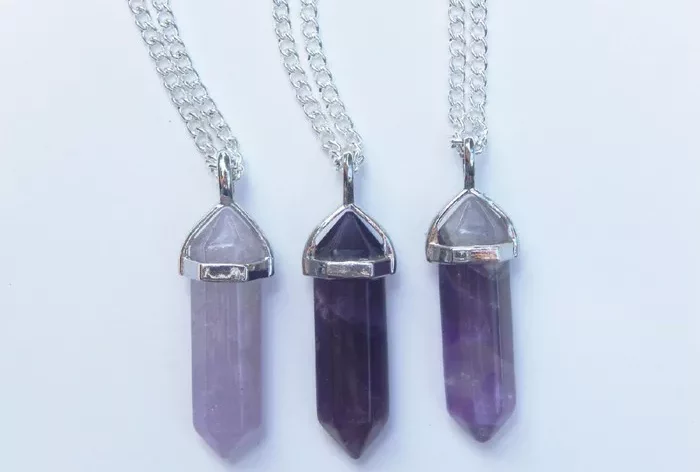Amethyst, a member of the quartz family, is a semiprecious gemstone known for its beautiful purple hues. This gemstone has fascinated humans for centuries due to its striking appearance and believed mystical properties. In the realm of gemstones, amethyst is relatively abundant, making it a popular choice for jewelry and decorative purposes. The term “dream amethyst” often refers to particularly vibrant or high-quality specimens, but the fundamental question remains: is dream amethyst natural?
What Defines Natural Gemstones?
Before diving into the specifics of dream amethyst, it’s essential to understand what constitutes a natural gemstone. Generally, a natural gemstone is one that has formed under natural geological conditions without human intervention. This includes gemstones that have been mined from the earth and have undergone minimal treatment to enhance their appearance. Treatments, such as heating or oiling, are common in the gemstone industry but can affect a gemstone’s classification as “natural.”
Characteristics of Natural Amethyst
Natural amethyst typically displays a range of purple shades, from light lavender to deep violet. The color is caused by trace amounts of iron and other impurities within the quartz crystal structure. Amethyst crystals can vary greatly in size, shape, and clarity, with some specimens exhibiting remarkable clarity and luster. Natural amethyst is often found in geological formations such as veins, geodes, and pegmatites.
The Concept of “Dream Amethyst”
The term “dream amethyst” is not a scientific classification but rather a marketing term used to describe particularly stunning or high-quality amethyst specimens. These gemstones are often selected for their exceptional color saturation, clarity, and cut. While “dream amethyst” does not have a strict definition, it generally refers to amethyst that stands out due to its exceptional beauty and appeal.
Is Dream Amethyst Natural?
To determine whether dream amethyst is natural, one must consider the gemstone’s origin and any treatments it has undergone. Here are some key factors to consider:
Origin and Mining
Natural amethyst is typically mined from geological deposits around the world, including Brazil, Uruguay, Russia, and parts of Africa and Asia.
Mining practices vary, but in general, natural amethyst is extracted using methods that minimize damage to the gemstone.
Color and Clarity
Natural amethyst’s color and clarity can vary widely. High-quality dream amethyst often displays exceptional color saturation and clarity, making it particularly desirable.
Some amethyst specimens may undergo heating treatments to enhance their color. While heating is a common practice, it does not necessarily render the gemstone unnatural. However, it should be disclosed to consumers.
Treatment and Enhancement
As mentioned, some treatments are common in the gemstone industry to improve a gemstone’s appearance. For amethyst, treatments such as heating and irradiation can alter its color and clarity.
Irradiation is less common for amethyst but can be used to create new colors or intensify existing ones. However, irradiated gemstones are typically not considered natural due to the artificial process involved.
Certification and Authentication
One way to ensure the authenticity and naturalness of a gemstone is through certification by a reputable gemological laboratory. These laboratories use advanced analytical techniques to determine a gemstone’s origin, composition, and any treatments it may have undergone.
Certified gemstones typically come with a report detailing their characteristics, allowing consumers to make informed purchases.
Identifying Natural Dream Amethyst
Identifying natural dream amethyst involves a combination of visual inspection, gemological testing, and, in some cases, certification. Here are some steps to follow:
Visual Inspection
Examine the gemstone for any signs of artificial enhancement. Look for uniform coloration, which can be a sign of heating or irradiation.
Check for natural inclusions, such as cracks, bubbles, or mineral deposits, which are common in natural gemstones.
Gemological Testing
Use gemological instruments such as spectroscopes, refractometers, and polariscopes to analyze the gemstone’s physical properties.
Spectroscopic analysis can reveal the presence of specific absorption lines that are indicative of natural amethyst.
Certification
Seek certification from a reputable gemological laboratory. Look for laboratories that adhere to international standards and have a good reputation in the industry.
Review the certification report carefully to ensure that the gemstone is natural and has not undergone any undisclosed treatments.
The Importance of Transparency and Disclosure
In the gemstone industry, transparency and disclosure are crucial. Consumers have the right to know whether a gemstone is natural, treated, or synthetic. Sellers should provide clear and accurate information about the gemstone’s origin, treatments, and any enhancements.
For dream amethyst, sellers should disclose any treatments that have been performed, such as heating or irradiation. This information is essential for consumers to make informed decisions and ensure they are purchasing a gemstone that meets their expectations.
Conclusion
In conclusion, dream amethyst is a term used to describe high-quality amethyst specimens that stand out due to their exceptional beauty and appeal. While the term itself is not scientific, it does reflect the gemstone’s desirability. To determine whether dream amethyst is natural, one must consider its origin, any treatments it has undergone, and the availability of certification.
Related topic:
- Can You Wear Amethyst and Yellow Sapphire Together?
- What is Amethyst Used for in Jewelry?
- The Mystical Charm of Amethyst and Black Obsidian


